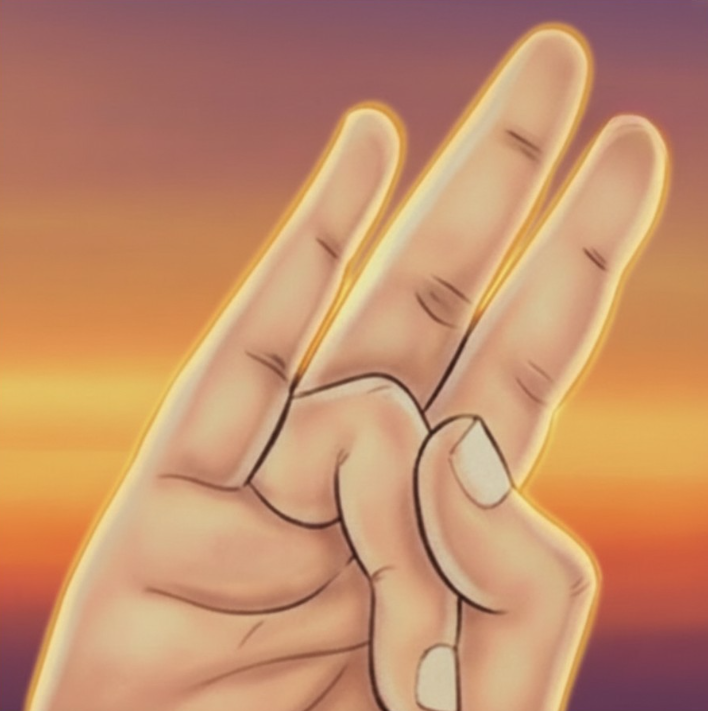We use our hands far more than we consciously realize. From the moment we wake up, they’re in motion—turning off alarms, tying shoelaces, pouring coffee, typing, scrolling, cooking, cleaning, holding, writing, opening, closing, gripping, fidgeting. It’s constant work, and even though our hands are designed for it, the strain builds quietly over time. Most of us don’t feel the tension until a joint cracks, a knuckle throbs, or a stretch suddenly feels unbelievably satisfying.
That’s why a simple action—like gently pulling or stretching your ring finger—can send a surprising wave of relief through your hand. It’s one of those small human instincts that seems random but actually makes perfect sense. The ring finger has tendons that run deep into the palm, wrist, and forearm. When you tug or stretch it, you’re releasing layers of micro-tension created by hours of repeated movements.
Pull the ring finger slowly, just enough to create a soft stretch, and you’ll feel that subtle shift—a tiny loosening, a bit of warmth, maybe even a small pop. That’s your hand saying, finally, thank you.
Pressing or massaging the base of that finger deepens the effect. You’re stimulating an area rich with nerves. Many wellness traditions—reflexology, acupressure, hand-stretch therapy—include a version of this same movement. They treat the hand like a map of tension points. And whether or not you believe in anything beyond the physical, you can’t deny the comfort that comes when circulation increases and tight muscles start to release.
Part of the relief is mechanical. Fingers stiffen during the day, especially if you type, grip objects, or repeat the same motions for long periods. Every movement adds to that stiffness. Stretching the ring finger helps open the joints and lengthen the tendons, almost the way stretching your calf feels good after a long walk. It’s not a medical treatment, but it’s a small corrective nudge your body appreciates instantly.
But the biggest impact isn’t just physical—it’s the moment it creates.
Our days move fast. Too fast. We bounce from one task to the next without pausing, barely noticing the physical load we place on ourselves. A quick finger stretch pulls you out of autopilot. It slows you down for a breath. And in that tiny pause, something shifts—your shoulders drop, your breathing steadies, your thoughts calm just enough to notice the difference between tension and release.
It’s a micro-moment of mindfulness disguised as a casual stretch.
There’s something grounding about paying attention to a part of your body you rarely think about. It’s small, simple, and surprisingly intimate. Your brain reads it as a break—a check-in, a reset. That’s why people instinctively tug their fingers when they’re thinking, processing, or decompressing. It’s a physical gesture that quietly opens a mental door.
If you stretch each finger slowly—from thumb to pinky—you’ll feel how each one releases a different kind of tightness. But the ring finger almost always hits a sweet spot. Maybe because the muscles connected to it work harder than we realize. Maybe because stretching it affects the palm so deeply. Whatever the reason, the relief is instant.
And you don’t need a quiet room, special instructions, or any equipment. You can do it at your desk, in the car (while stopped), watching TV, waiting for water to boil, or lying in bed before sleep. It’s one of the easiest low-effort ways to reduce tension in both the body and the mind.
Most people don’t realize how tired their hands are until they give them even a little bit of attention. Then they start noticing the tight knuckles, the dull ache in the palm, the stiffness reaching into the wrist. A few seconds of gentle pressure and stretching can soften all of that.
This isn’t about treating pain or solving medical issues. It’s about maintenance—acknowledging the work your hands do every day and offering a moment of physical gratitude. Think of it like splashing water on your face after a long day. It doesn’t fix everything, but it reminds you how much you needed that pause.
If you build this small habit into your routine, you’ll start noticing other benefits too. A steadier grip. Smoother typing. Less hand fatigue during long tasks. Even a shift in mood, because tension—wherever it lives—affects your whole system.
The body is connected in ways we often forget, and sometimes the quickest way to calm your mind is through something as tiny as the tip of a finger.
So next time you feel stressed, overwhelmed, or just tired, try this: pause for ten seconds, wrap your thumb and index finger around the base of your ring finger, and gently stretch. Breathe. Pay attention to what your body gives back.
You might be surprised how much relief a small gesture can offer—and how something so simple, something you can do anywhere, can bring you back to yourself even for a moment.
In a world driven by speed, a quiet moment of attention is a gift you give to yourself.
Even if it comes from the smallest stretch of a single finger.
